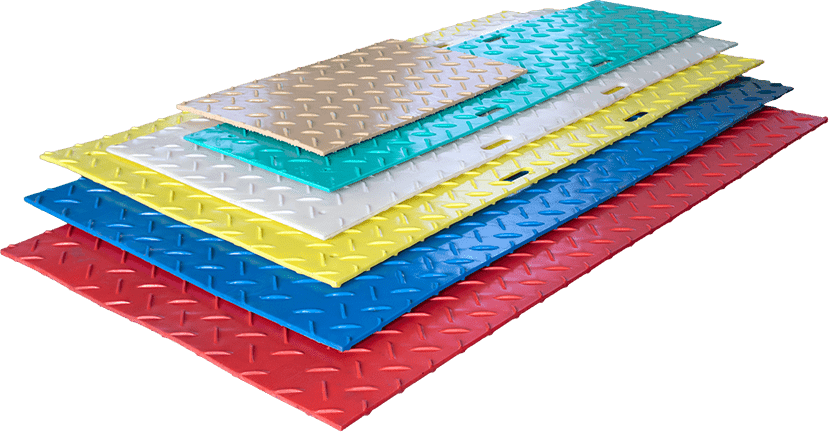During the construction process, ground protection mats (such as HDPE temporary road mats, lawn protection mats, heavy equipment bearing mats, etc.) can effectively reduce the impact on the environment, mainly in the following aspects:
1.Prevent soil compaction and erosion
– Frequent rolling of construction equipment and vehicles may result in soil compaction, reduced permeability, and the growth of vegetation.
-Through laying the ground protective mat, it can distribute the weight of the equipment and reduce the damage to the soil structure.
-Use of anti-slip mat on slopes or erosion-prone areas can reduce soil loss due to rain erosion.
2.Protect vegetation and ecosystems
– When constructing on lawns, forests or wetlands, directly laying protection mats can avoid vehicles rolling over vegetation and reduce damage to the ecosystem.
– Some environmentally friendly mats have permeable functions, which allow plant roots to continue to obtain water and oxygen, reducing long-term damage.
3.Reduce the spread of mud and pollution
– Mud, oil, chemicals, etc. in a building site may pollute the water and soil around it.
– The installation of anti-leakage protection mat can isolate the contamination and prevent it from entering the ground water or flowing into the river or lake.
4.Reduce noise and vibration
– Some ground protection mats (such as those made of rubber or composite materials) can absorb vibration and noise, reducing interference with surrounding communities and wildlife.
5.Improve construction safety and efficiency
– Ground protection mats provide a stable road surface, which can reduce problems such as vehicle slipping and getting stuck, and improve construction efficiency.
– In soft ground or bad weather conditions, ground mats can provide better driving conditions and avoid unnecessary environmental damage.
6.Reusable and reduce waste
-Modern environmentally friendly carpets are generally made of high-strength plastics, synthetics or rubber, with good durability and reusability.
-After the building is completed, it can be recycled, reducing waste emissions and achieving the goal of sustainable development.
7.Implementation suggestions:
Choose appropriate materials: Select pressure-resistant, wear-resistant and environmentally friendly materials such as polymer plastic pads, rubber pads or composite pads according to the specific conditions of the construction site (such as load, climate, terrain).
Conclusion
The use of geosynthetics as a means of reducing the harm of engineering construction to the ecological environment is of great significance in reducing soil erosion, vegetation destruction, water pollution, etc., and also meets the major needs of environmental protection and sustainable development.






